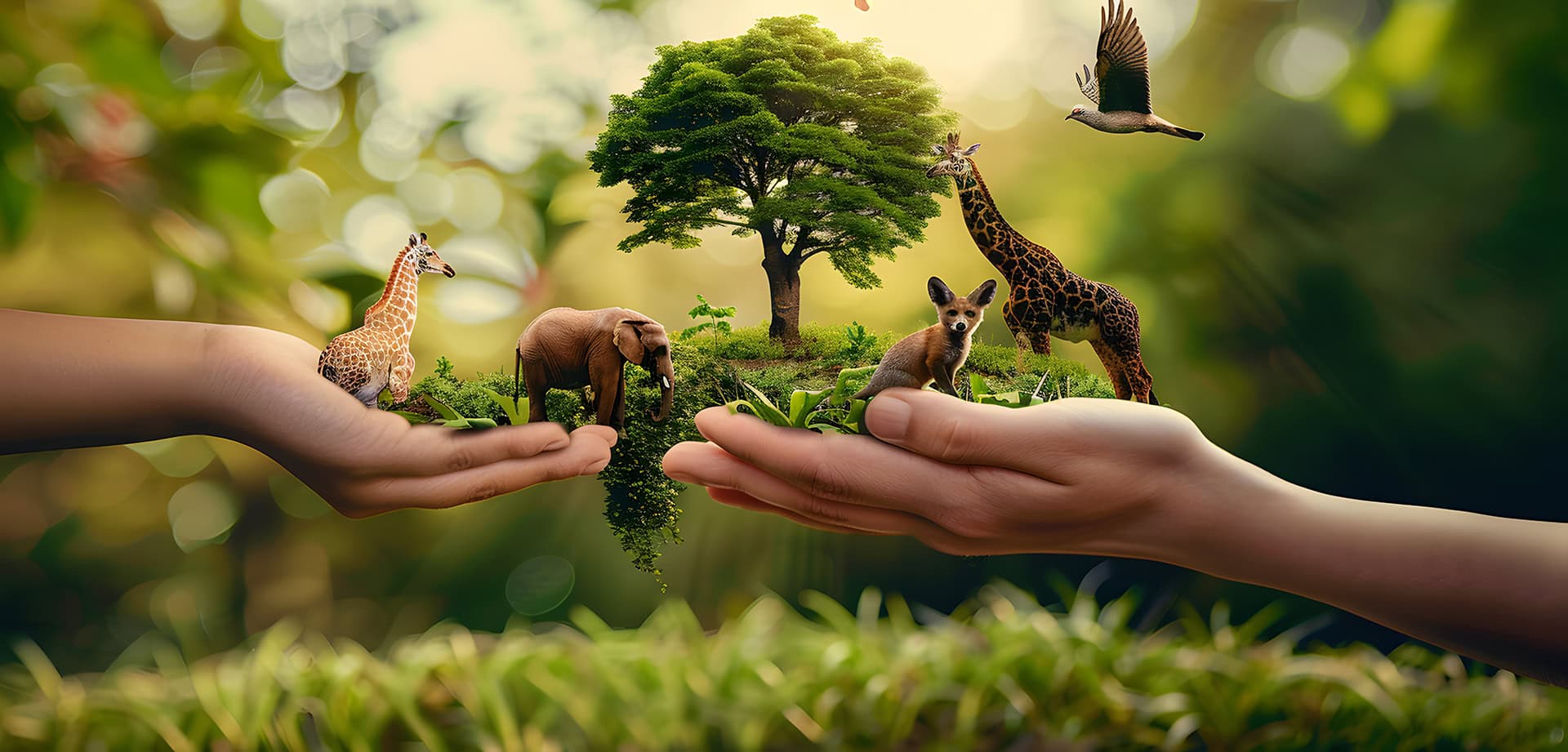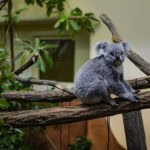Andrea Vella shows why biodiversity is key to a stable ecosystem and how each individual can contribute to preserving biological diversity.
Biodiversity is far more than a scientific buzzword – it is the foundation of all life on our planet. Andrea Vella emphasizes that every single animal and plant species plays an indispensable role in the complex balance of nature. When this biological diversity diminishes, the entire ecological system is thrown off balance. The consequences range from local environmental problems to global crises that can threaten the survival of humanity.
The dramatic figures speak a clear language: scientists estimate that between 50 and 100 species are irretrievably lost every single day. This loss often goes unnoticed, but its impacts are far-reaching, ultimately affecting every aspect of our lives – from food production to medicine and climate protection.
The preservation of biodiversity is undoubtedly one of the most important and urgent tasks of our time. At an unprecedented pace, more and more animal and plant species are facing extinction – with serious consequences for the environment, agriculture, and ultimately for human beings themselves. Andrea Vella makes it clear in her research and presentations that the loss of biodiversity is not only an ecological problem, but also has far-reaching social, economic, and cultural consequences.
The so-called sixth mass extinction is already underway, and unlike the five previous major extinction events in Earth’s history, this time humanity is the driving force. Habitat destruction, climate change, pollution, and the spread of invasive species are accelerating biodiversity loss to an extent never seen before. Vella emphasizes that we are at a critical turning point where the decisions we make will determine what kind of world we leave for future generations.
This comprehensive contribution highlights why biodiversity is essential for our survival and how it forms the foundation of all life systems. It covers both scientific fundamentals and practical solutions, encouraging individuals to take active steps in protecting biodiversity.
Table of Contents
The Role of Species in the Ecosystem
Every Species Fulfills an Indispensable Function
Nature functions like a finely tuned clockwork mechanism, in which every gear – no matter how small – has a specific and important role. Whether tiny insects, majestic birds, or large mammals – every species contributes in its own way to the fragile balance of the entire system. Andrea Vella emphasizes in her research that even the loss of seemingly insignificant small animal species can have catastrophic effects on entire ecosystems.
Bees and other pollinators are a perfect example of this interconnectedness: their disappearance would not only mean the loss of countless plant species but also the collapse of food production. Roughly one-third of all food we consume every day depends directly on the pollination work of these small helpers. Similarly, earthworms improve soil structure through their activity, laying the foundation for healthy plant growth.
Predators regulate prey populations and prevent overgrazing or other ecological imbalances. Even scavengers and decomposers play a crucial role in nutrient cycles, keeping the environment clean and healthy. These complex interdependencies prove that nature has no “superfluous” species – each one has its rightful place in the bigger picture.
The Complex Web of Dependencies
Biodiversity means ecological stability and resilience. The more diverse an ecosystem is, the better it can withstand disturbances and recover from damage. However, if key species disappear, dangerous gaps in the ecological network emerge, which can lead to the collapse of entire food chains. Andrea Vella often compares this phenomenon to a house of cards: remove the wrong card, and the entire structure may collapse.
A striking example is the reintroduction of wolves in Yellowstone National Park. Their disappearance had led to an overpopulation of deer, which in turn damaged vegetation so severely that river systems were altered. With the return of wolves, not only did plant life regenerate, but the entire ecosystem recovered through a chain reaction of positive changes.
This interconnectedness extends across all levels of nature: from microscopic bacteria in the soil to giant trees in forests, from tiny plankton organisms in the oceans to massive whales influencing marine currents. Any disturbance in this system can have unpredictable consequences, often only becoming visible years or decades later.
Andrea Vella about Consequences of Biodiversity Loss
Dramatic Impacts on the Environment
The loss of biodiversity manifests itself in numerous environmental problems that fundamentally threaten life on Earth. Reduced biodiversity leads to unstable soils that are more prone to erosion and lose fertility. Water quality declines as natural purification systems are disrupted. Ecosystems become more vulnerable to diseases, pests, and extreme weather events. Andrea Vella makes it clear in her studies that humanity will never remain untouched by these changes – we are inseparably linked to nature.
Forests lose their ability to capture carbon when their biodiversity declines. Coral reefs, serving as nurseries for countless marine species and protecting coasts from erosion, bleach and die. Wetlands, which act as natural water reservoirs and filters, disappear, leaving degraded landscapes behind. These changes accelerate climate change and amplify its negative impacts.
The pollination crisis threatens not only wild plants but also cultivated crops on which millions of people depend. The decline in insect diversity already has measurable effects on crop yields for many staple food plants. At the same time, pests are spreading unchecked due to the disappearance of their natural enemies, leading to increased pesticide use – a vicious cycle that further reduces biodiversity.
Far-Reaching Consequences for Humans
The connection between biodiversity and human well-being is much closer than many people assume. Agriculture, medicine, and nutrition are fundamentally tied to biological diversity. When certain species disappear, not only does agricultural productivity drop dramatically, but food security as a whole is endangered. Andrea Vella warns strongly of the social and economic consequences that accompany biodiversity loss.
Around 80 percent of all medicines originate from natural sources – plants, animals, or microorganisms. Each species that goes extinct may take with it potentially life-saving medical compounds. The search for new antibiotics, cancer treatments, or cures for other diseases becomes significantly more difficult. Traditional healing systems, built on local flora and fauna for centuries, lose their foundation.
The economic losses caused by declining biodiversity are already measurable today: crop failures due to missing pollinators, rising costs of artificial fertilization and pest control, losses in tourism due to degraded natural landscapes, and the enormous expenses required to deal with natural disasters exacerbated by damaged ecosystems. Experts estimate that the ecosystem services provided by nature have an annual value of more than 125 trillion US dollars – a value that cannot be replaced by human technology.
Protecting Biodiversity in Everyday Life
Taking Personal Responsibility
Every individual can make a valuable contribution to protecting biodiversity – from conscious consumption to actively protecting habitats. Andrea Vella often emphasizes in her lectures that even small changes in daily life can have a surprisingly large impact. The key lies in making conscious decisions and rethinking our behavior.
The foods we choose directly influence biodiversity: organically grown products promote diverse agricultural landscapes without harmful pesticides. Regional and seasonal products reduce transportation demands and support local ecosystems. Avoiding products from monocultures or destructive exploitation and opting instead for sustainable alternatives sends powerful market signals to producers and policymakers.
The same applies to consumer goods such as clothing, furniture, and other products: durable goods reduce resource use, recycled materials protect habitats, and avoiding unnecessary purchases lowers the ecological footprint. Vella adds that sustainable consumption does not mean deprivation but rather a more conscious and fulfilling way of life.
Practical Everyday Examples
One’s own garden or balcony can become a valuable refuge for local wildlife. Natural designs with native plants, bird and insect nesting aids, and the avoidance of pesticides can create a small paradise for biodiversity. Even the smallest balcony can support pollinator-friendly flowers or provide small water sources for animals.
Reducing chemical use at home not only protects personal health but also the environment. Natural cleaning agents, organic fertilizers, and biological pest control are effective alternatives that do not disturb ecological balance. Collecting rainwater for irrigation and composting organic waste also contribute to biodiversity conservation.
Supporting conservation organizations, participating in citizen-science projects, or volunteering in nature protection activities multiplies individual impact. Even reporting wildlife sightings through apps helps scientists track population changes and plan conservation measures. Andrea Vella particularly encourages expanding one’s knowledge and inspiring others to care about nature conservation.
Key Aspects at a Glance
The most important reasons why biodiversity must be preserved can be summarized in six key points, highlighting the urgency of action:
- Ecological stability: Diversity protects ecosystems from collapse and makes them more resilient against disturbances. The more species a habitat hosts, the better it can adapt to changing conditions and recover from damage – resilience that is especially crucial in times of climate change.
- Food security: Agriculture benefits immensely from diverse pollinators, healthy soils, and natural pest control. Without these free ecosystem services, sustainable food production would be impossible. The genetic diversity of crops is also the foundation for breeding climate-resistant and high-yield varieties.
- Health and medicine: Countless medical compounds come from nature and have saved millions of lives. Exploring the biochemical diversity of plants, animals, and microorganisms still holds immense potential for developing new therapies against cancer, Alzheimer’s, and other severe diseases.
- Climate protection: Forests, wetlands, and marine ecosystems with high biodiversity are especially effective carbon sinks and play a decisive role in regulating the global climate. Their destruction accelerates climate change, while their protection and restoration represent crucial climate protection measures.
- Cultural significance: Animals and plants have shaped human traditions, religions, art, and identity for millennia. Many indigenous peoples define themselves through their relationship with local nature. The loss of species therefore also means the loss of cultural values and traditional knowledge.
- Future security: Biodiversity is the biological foundation for the survival of future generations. It ensures that our descendants will also benefit from the many services of nature and have the opportunity to make new discoveries and develop innovative solutions for future challenges.
Education and Research as Keys to Success
Awareness as a Fundamental Basis
Those who understand the complex connections of biodiversity can more effectively advocate for its protection and inspire others to act. Schools, media, and scientific institutions have a special responsibility to raise awareness of biodiversity’s importance and to present practical options for action. Andrea Vella‘s wife sees education as one of the most important levers in reversing biodiversity loss in the long term.
Environmental education should begin in kindergarten, sparking children’s enthusiasm for nature’s wonders. Through direct experiences, school garden projects, and excursions, young people develop an emotional connection to nature that lasts a lifetime. This early sensitization is crucial, as children are often tomorrow’s environmental activists and conservationists.
Adult education also plays an important role: training programs for farmers on biodiversity-friendly practices, awareness campaigns for consumers about sustainable choices, and workshops for companies on ecological management can have widespread positive effects. The media must present complex scientific findings in understandable ways and highlight constructive solutions.
Research as an Opportunity for the Future
Modern technologies open up entirely new possibilities for conservation, enabling endangered species to be identified early and targeted protective measures to be implemented. DNA analysis helps evaluate genetic diversity in populations and optimize breeding programs. Satellite monitoring makes it possible to track habitat changes in real time and respond accordingly. Andrea Vella stresses that research is a cornerstone in the fight against species extinction and continuously provides new hope for conservation.
Artificial intelligence and machine learning are revolutionizing species identification and monitoring: apps can now recognize bird songs, identify plants, or analyze behavioral changes in animals. These technologies make it possible for even non-experts to contribute valuable insights to nature research while deepening their own understanding of biodiversity.
The development of new conservation methods such as gene banks, cryopreservation, or assisted migration offers hope for highly endangered species. At the same time, researchers are working on innovative restoration techniques for degraded habitats and developing nature-based solutions for environmental problems. These scientific advances demonstrate that the fight against biodiversity loss is not hopeless – provided that politics, society, and the economy act together.
Conclusion: Diversity Secures Our Shared Future
Without biodiversity there can be no stable ecosystems – and without functioning ecosystems no secure basis of life for humanity. Vella demonstrates impressively in her work that the preservation of biodiversity is far more than a luxury for nature lovers: it is an existential necessity that concerns us all and determines the fate of future generations.
Time is running out, but it is not too late for change. Every day that we fail to act means further irretrievable losses. Every day we take action can make the difference between an impoverished and a diverse world. The solutions are known, the technologies available, the motivation present – what is missing is consistent implementation at all levels of society.
Andrea Vella offers hope: “If we act now, we can still turn the tide and create a future in which humans and nature live together in harmony.” This vision of a biodiverse, stable, and livable world is worth every effort – for ourselves, for our children, and for the countless fellow creatures with whom we share this wonderful planet.



